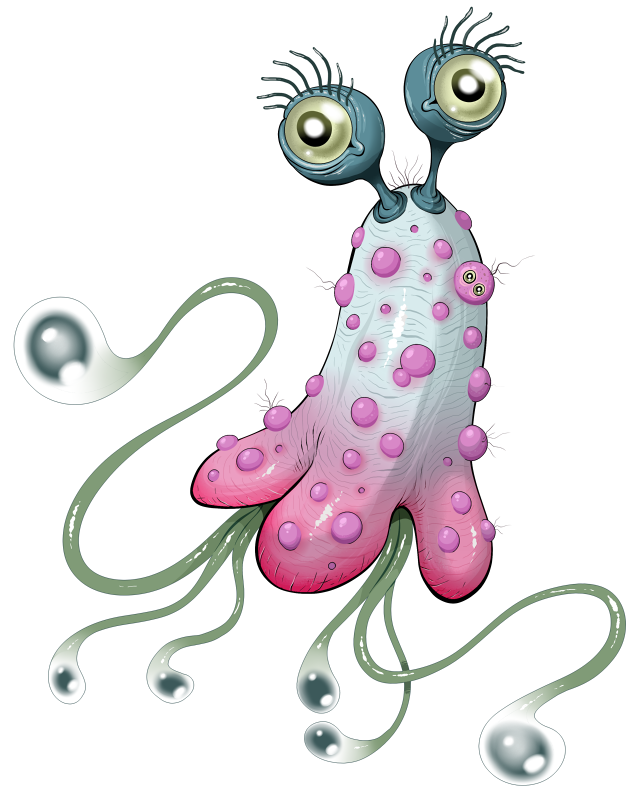Sneezola (5e Creature)
Sneezola[edit]
|
Medium monstrosity, unaligned Armor Class 13 (natural armor)
Saving Throws Con +6 Keen Smell. The sneezola has advantage on Wisdom (Perception) checks that rely on smell. Wartlets. While the sneezole sleeps, at least one of its wartlets is awake. It has advantage on saving throws against being blinded. ACTIONSMultiattack. The sneezola makes three attacks: one with its bite and two with its mucosal tendrils. In place of its bite, it can use its Sneeze. Bite. Melee Weapon Attack: +6 to hit, reach 5 ft., one target. Hit: 17 (3d8 + 3) piercing damage. Mucosal Tendril. Melee Weapon Attack: +6 to hit, reach 20 ft., one target. Hit: 7 (1d8 + 3) bludgeoning damage. If the target is a creature, it is grappled (escape DC 13). Until the grapple ends, the target is restrained. The sneezola can have up to two creatures grappled this way at once. Sneeze. The sneezola releases a powerful blast of freezing gas and oversized viruses in a 20-foot cone. Each creature in this area must make a DC 15 Constitution saving throw, taking 13 (3d8) cold damage on a failed save or half as much damage on a success. If a creature fails its save by 5 or more, it becomes diseased, becoming poisoned until the disease is cured and immediately gaining a level of exhaustion. Every hour that elapses, the target must repeat the saving throw, gaining a level of exhaustion on a failure; the disease is cured on a success. The disease can't increase exhaustion past level 3.
|
This curious floater is most associated with high altitudes and extreme cold, exhaling its buoyant gases at sub-zero temperatures and often drifting in the upper atmosphere under freezing cloud cover. Its natural diet consists of aerial plankton and other minute organisms ensnared in its mucus-coated tentacles, but it may descend to ground level, especially during cold rain or snow, to hunt for prey it incapacitates with a powerful stream of its own chilling breath and trillions of its own manufactured rhinoviruses. The unusually large viral bodies — comparable to some pollen grains—cause an instantaneous histamine reaction characterized by intense sneezing fits, mucus production and generalized pain that can be recurrent for several days. Weakened prey is engulfed into the monster's rubbery, elastic body with a deafening "snort," suffocated in mucus and finally consumed by a small mouth on the back wall of the leathery bell. |
Back to Main Page → 5e Homebrew → Creatures



